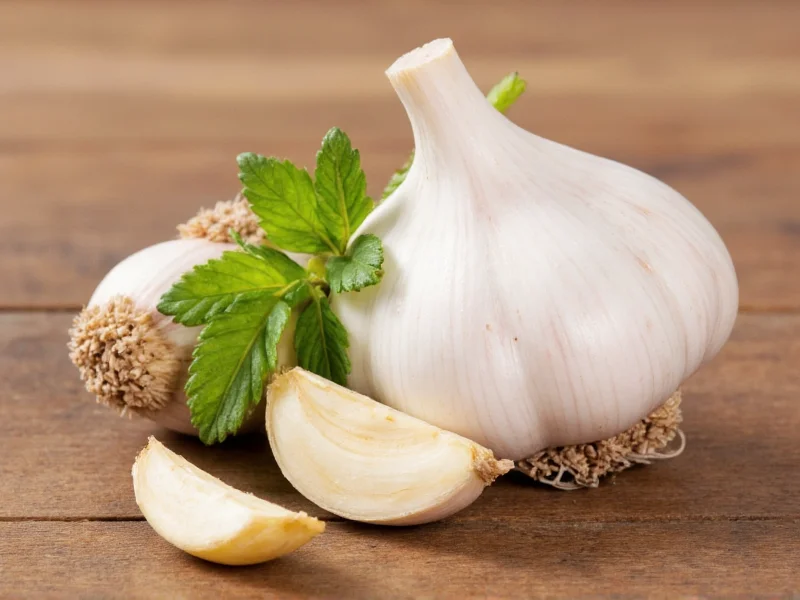Many home cooks and even professional chefs wonder is garlic a herb or spice when planning recipes or organizing their pantry. The confusion stems from how we use garlic in cooking versus its actual botanical classification. Let's clarify this common culinary question once and for all.
Botanical Classification: Why Garlic Isn't a Herb
From a botanical perspective, garlic is classified as a vegetable, specifically a bulb vegetable in the Alliaceae family. Herbs are defined as the leafy, green parts of plants—typically the stems and leaves of non-woody plants. Examples include basil, cilantro, and parsley. Garlic grows underground as a bulb composed of individual cloves, which places it in a completely different botanical category.
Culinary Definitions: Herbs vs. Spices vs. Vegetables
Understanding the culinary distinction between herbs, spices, and vegetables helps clarify why garlic is not considered a herb:
| Category | Definition | Examples |
|---|---|---|
| Herbs | Leafy parts of aromatic plants, usually from temperate climates | Basil, thyme, rosemary, cilantro |
| Spices | Parts of plants other than leaves (seeds, bark, roots, flowers), typically from tropical regions | Cinnamon (bark), cumin (seeds), ginger (root), saffron (flowers) |
| Vegetables | Edible parts of plants including roots, bulbs, stems, leaves, flowers | Carrots (roots), garlic (bulbs), celery (stems), spinach (leaves) |
Why Garlic Functions Like a Spice in Cooking
Despite being botanically a vegetable, garlic is often used like a spice in culinary applications. This explains why many people question is garlic a spice or herb. Garlic delivers potent flavor in small quantities, similar to how spices are used. A single clove can transform an entire dish, much like adding a pinch of cumin or cinnamon.
Unlike most vegetables that form the main component of a dish (like a serving of broccoli or carrots), garlic typically serves as a flavoring agent. This functional similarity to spices creates the confusion about garlic vegetable classification in cooking contexts.
The Scientific Classification of Garlic
Scientifically, garlic (Allium sativum) belongs to the Allium genus, which includes:
- Onions (Allium cepa)
- Shallots (Allium ascalonicum)
- Leeks (Allium ampeloprasum)
- Chives (Allium schoenoprasum)
All these plants grow as bulbs underground and are classified as vegetables, not herbs or spices. The entire Allium family shares similar chemical compounds that create their distinctive pungent flavors and aromas.
Common Misconceptions About Garlic's Classification
Several factors contribute to the ongoing confusion about is garlic considered a herb:
- Dried garlic products: Garlic powder and garlic salt are often grouped with spices in grocery stores
- Culinary function: Like spices, garlic is used primarily for flavor rather than as a main ingredient
- Preparation methods: Minced or powdered garlic resembles ground spices in texture
- Storage practices: Many cooks store garlic with their spice collection for convenience
Practical Implications for Cooking
Understanding that garlic is a vegetable, not a herb or spice, matters for several practical reasons:
- Freshness considerations: Unlike dried herbs and spices that last months, fresh garlic has a limited shelf life
- Flavor development: Garlic's flavor compounds change when cooked differently than most spices
- Substitution knowledge: Knowing garlic's vegetable nature helps when finding alternatives
- Nutritional understanding: Garlic provides different nutrients than true herbs or spices
How Chefs and Cookbooks Classify Garlic
Professional culinary resources consistently classify garlic as a vegetable or aromatic rather than a herb or spice. Most chef's manuals and culinary textbooks place garlic in the "aromatics" category alongside onions, celery, and carrots—the foundational flavor base for many cuisines worldwide.
When recipes specify "fresh herbs," they never include garlic in this category. Similarly, spice blends might contain garlic powder, but this doesn't reclassify the ingredient—it simply represents a processed form of the vegetable.
Conclusion: Setting the Record Straight on Garlic
The question is garlic a herb or spice has a definitive answer: garlic is neither. It's a vegetable bulb from the Allium family. While garlic functions similarly to spices in cooking applications, its botanical classification remains distinct. Understanding this difference helps cooks make more informed decisions about storage, substitution, and usage in recipes.
Is garlic considered a herb in culinary contexts?
No, garlic is not considered a herb in culinary contexts. While it's often grouped with herbs and spices for convenience, professional chefs classify garlic as an aromatic vegetable. Herbs specifically refer to the leafy parts of plants, whereas garlic is a bulb.
Why do people think garlic is a spice?
People often mistake garlic for a spice because it's used in small quantities to add flavor to dishes, similar to how spices are used. Additionally, garlic powder and garlic salt are commonly found in spice sections of grocery stores, reinforcing this misconception.
What's the botanical difference between herbs, spices, and garlic?
Botanically, herbs are the leafy parts of plants, spices come from other plant parts like seeds, bark, or roots (typically from tropical plants), while garlic is a bulb vegetable from the Allium family. Garlic grows underground as a modified stem, making it fundamentally different from both herbs and spices.
Can garlic be classified as both a vegetable and a spice?
No, garlic cannot be classified as both. Botanically, it's strictly a vegetable (bulb). While it functions like a spice in cooking due to its potent flavor, this functional similarity doesn't change its botanical classification. Culinary usage doesn't override scientific categorization.
How should I store garlic compared to herbs and spices?
Fresh garlic should be stored in a cool, dark, dry place with good air circulation—similar to onions but different from most herbs and spices. Unlike dried herbs and spices which last months in closed containers, fresh garlic typically lasts 3-6 months. Garlic powder can be stored with spices, but remember it's a processed form of the vegetable, not a true spice.











 浙公网安备
33010002000092号
浙公网安备
33010002000092号 浙B2-20120091-4
浙B2-20120091-4